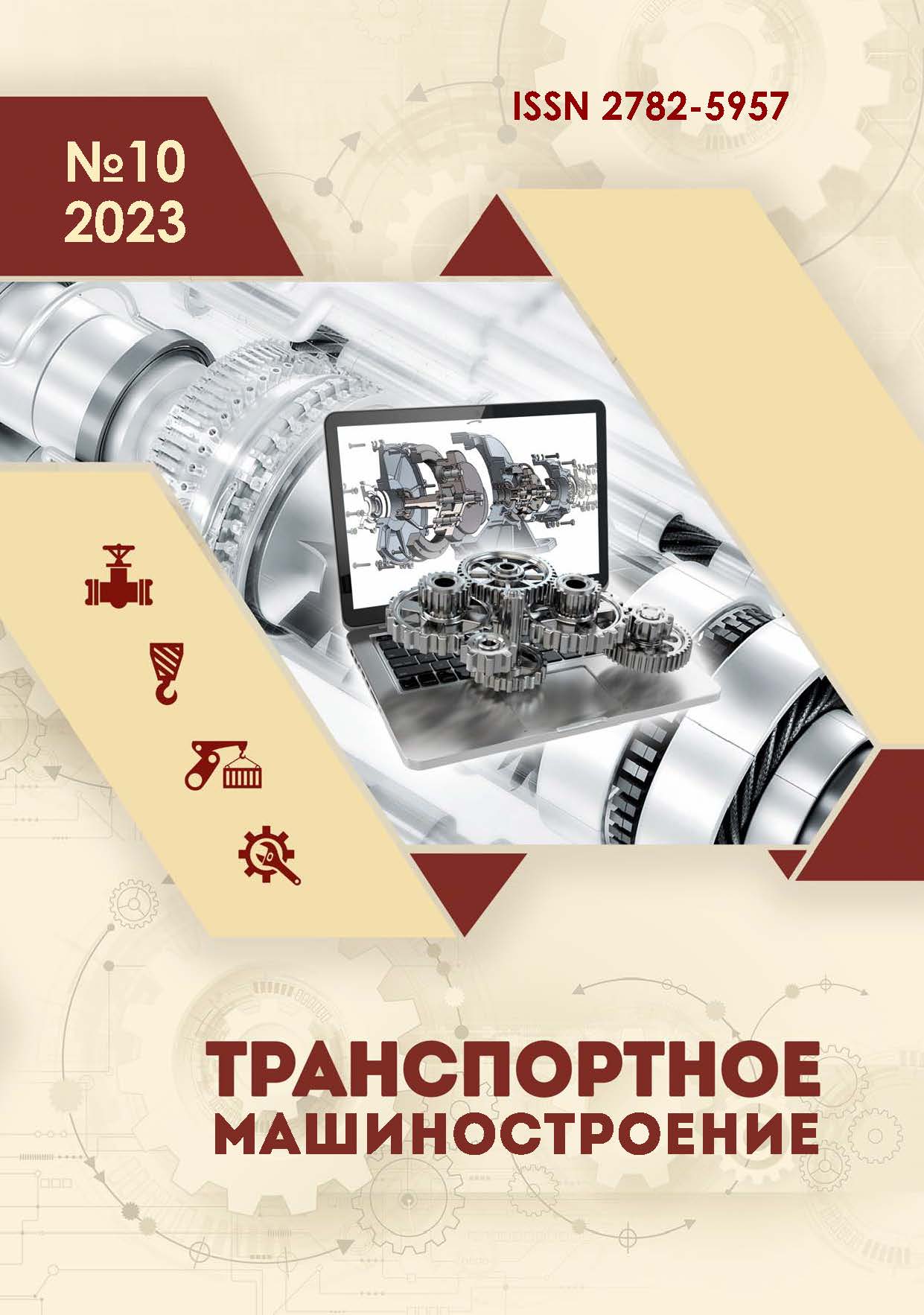employee
Moscow, Moscow, Russian Federation
employee
Moscow, Moscow, Russian Federation
employee
Moscow, Moscow, Russian Federation
employee
Moscow, Moscow, Russian Federation
UDK 625.144 Укладка пути
BBK 392 Железнодорожный транспорт
To reduce the energy density of the ballast cleaning machine drive, it is necessary to evaluate the load affecting the drive of the bar device, since it is the most loaded while cutting the ballast. To obtain and evaluate the drive parameters during operation, it is proposed to use computer modeling methods using software complexes. To form the initial data when modeling the drive, it is necessary to study the process of interaction of the ballast with the bar chain of the cutting tool, which will allow to find out the nature of cutting. According to LS-Dyna, it was possible to determine that the load during modeling is sinusoidal, which corresponds to the experimental studies conducted in this area. In addition, it was found that during the operation of the bar working body, cutting forces decrease when dragging the scraper sole along the ballast layer. The use of FestoHydrolic software made it possible to find a sinusoidal load affecting the drive of the cutting tool, and the amplitude of changes in its parameters is also evaluated.
machine, device, ballast layer, modeling
1. Chalova MYu. Improvement of the method forcalculating the parameters of the scraper-chain device of the ballast cleaning machines of a new generation [abstract of dissertation]. [Moscow (RF)]; 2015.
2. Kovalsky VF. Analysis and synthesis of dynamic hydraulic drive parameters of the scraper chain of ballast cleaning machines. Science and Technology in Transport. 2005;2:86-94.
3. Skutin AI, Mylnikov MM. Development of a model of transverse forces appearing in a ballast layer under the influence of external loads. Modern Technologies. System Analysis. Modeling. 2020;4(68):220-230. doi:https://doi.org/10.26731/1813-9108.2020.4(68). - EDN QIPEFI.
4. Bidulya AL, Agapov DG, Pogorelov DYu. Computer modeling of railway ballast in a flat solid-state production. Bulletin of Bryansk State Technical University. 2004;1(1):129-137.
5. Agapov DG, Ilyushin AV, Pokatsky VA. Modeling of residual sediment of the ballast layer. Vestnik Transporta Povolzhya. 2012;1(31):41-47.
6. Kibko MO. Modeling of a continuous medium using SPH method. Perspektivi Razvitiya Informatsionnih Tekhnologii. 2016;30:12-23.
7. Onishchenko DA, Slyusarenko AV, Shushpannikov PS. Study of the peculiarities of plowing sandy soil process with ice keels using three-dimensional modeling of the finite element method. Scientific and Technical Collection, 2018: Vesti Gazovoi Nauki. 2018;4(36):180-191.
8. Borovikov AV. Study of hydraulic drive operation using FluidSIM. International Student Scientific Bulletin. 2019; 5-1:5.
9. Suwandi A, Alamsyah NF, Dede Lia Zariatin, Sulaksono B, Prayogi E. Simulated design of hydraulic systems for fishing deck machinery hydraulic type with FluidSIM® software. AIP Conf. Proc. 6 May 2020; 2227 (1): 020012. https://doi.org/10.1063/5.0000914.
10. Yang J, Lu W, Hu Y. Numerical simulation of rock mass damage evolution during deep-buried tunnel excavation by drill and blast [Internet]. Rock Mech Rock Eng. 2015;48:2045-2059. Available from: https://doi.org/10.1007/s00603-014-0663-0.
11. Kovalsky, V.F. Parametric optimization of hydropri-waters of construction and track machines/V.F. Kovalsky, M. Yu. Chalova, D.S. Fedasov//Mechanization of construction. 2017. T. 78, NO. 2. S. 32-36. - EDN ZRRQLX.
12. Kovalsky, V.F. Methodology for the synthesis of optimal para-meters of new generation track machines/V.F. Koval-sky, S.V. Kovalsky, M.Yu. Chalova//Path and track ho-zaystvo. 2012. № 11. S. 21-24. - EDN PMDKFJ.





